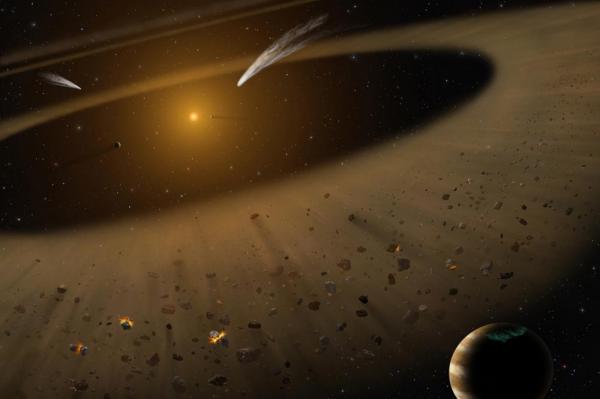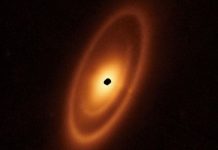
May 3 (UPI) — A nearby star system is offering scientists clues to the dynamics of our own early solar system.
According to new research published in the Astronomical Journal, the star Epsilon Eridani is a good model for our solar system, several billion years ago.
The star, also called Ran, is situated 10 light-years from Earth in the southern constellation of Eridanus. Ran is a star much like the sun, but one-fifth the sun’s age.
A team of astronomers recently took to the air aboard NASA’s SOFIA aircraft to study the star system. The 747 airplane houses a 2.5-meter telescope, which researchers used to collect infrared data.
The new data confirms the presence of a complex protoplanetary disk around the star. The disk features two differentiated rings of debris similar to the asteroid and Kuiper belts circling through the outer realms of our own solar system.
Because Epsilon Eridani is a good model for the early solar system, researchers hope further analysis of the star system will offer clues as to how our own solar system formed and evolved.
“This star hosts a planetary system currently undergoing the same cataclysmic processes that happened to the solar system in its youth, at the time in which the moon gained most of its craters, Earth acquired the water in its oceans, and the conditions favorable for life on our planet were set,” Massimo Marengo, an astronomer at the Iowa State University, wrote in a research summary.
The detailed analysis of Ran’s protoplanetary disk — published this week in the Astronomical Journal — is the result of several years of work. Making out the faint emissions of the disk amidst the bright radiation of the host star required the help of several computer model simulations.
“But we can now say with great confidence that there is a separation between the star’s inner and outer belts,” Marengo said. “There is a gap most likely created by planets. We haven’t detected them yet, but I would be surprised if they are not there.”
Researchers hope further analysis using NASA’s James Webb Space Telescope will reveal more intricate details. The next-generation space telescope is scheduled to launch in 2018.
“The prize at the end of this road is to understand the true structure of Epsilon Eridani’s out-of-this-world disk, and its interactions with the cohort of planets likely inhabiting its system,” Marengo wrote.
“SOFIA, by its unique ability of capturing infrared light in the dry stratospheric sky, is the closest we have to a time machine, revealing a glimpse of Earth’s ancient past by observing the present of a nearby young sun.”





